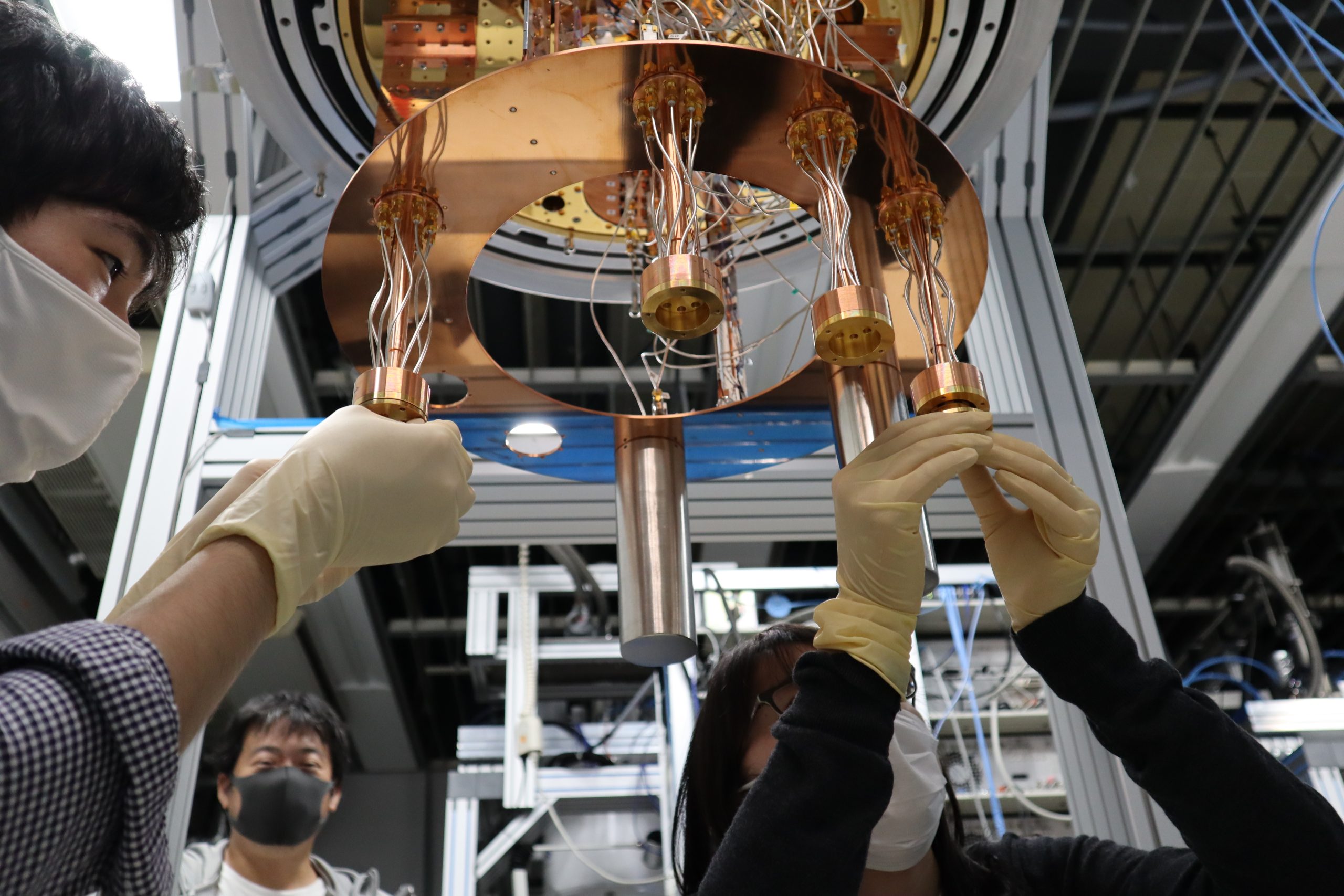Tohoku University and NEC Corporation have begun joint research using an 8-qubit quantum annealing machine developed by NEC and Japan’s National Institute of Advanced Industrial Science and Technology (AIST). The machine, the first of its kind in Japan, uses superconducting technology and the ParityQC Architecture, making it resistant to noise and capable of scaling up while maintaining a prolonged quantum superposition state. The research aims to solve complex social issues by deriving optimal combinations from many options. The machine will be accessible via the internet, marking a significant step in the social implementation of quantum computing technologies.
Tohoku University and NEC’s Joint Research on Quantum Computing
The 8-qubit quantum annealing machine has been developed using superconducting technology paired with ParityQC Architecture. This makes the machine resistant to noise and capable of scaling up to a fully-connected quantum annealing architecture while maintaining a prolonged quantum superposition state.
The quantum annealing machine is designed to solve complex social issues by deriving optimal combinations from many options. This is achieved through the solution of combinatorial optimization problems. The machine uses superconducting parametrons, which makes it resistant to noise and enables a long coherence time.
The machine can maintain a long coherence time even in multi-qubit implementation by adopting the ParityQC architecture, a coupling technology that is highly compatible with parametrons. These features enable calculating real-world combinatorial optimization problems at high speed and with high accuracy.
The Role of ParityQC Architecture
The ParityQC Architecture is a patented technology at the heart of this quantum annealing machine. It offers resistance to noise and scalability to a fully connected quantum computer while maintaining a prolonged quantum superposition state.
“This is a remarkable validation of the intrinsic advantages afforded by the ParityQC approach: a resistance to noise and the scalability to a fully connected quantum computer while maintaining a prolonged quantum superposition state. The adoption of the ParityQC Architecture by NEC, one of the world’s top supercomputer companies, is an extraordinary achievement for the 4-year-old Innsbruck University spin-out. It establishes ParityQC as the world’s first QC architecture company with a proven working implementation demonstrating compelling advantages, which will lead to the adoption of ParityQC design by many other hardware manufacturers. Several recent announcements of QC consortia in Europe already attest to that.”
Hermann Hauser, Co-Founder of Amadeus Capital and Acorn
NEC, a supercomputer company, has adopted the ParityQC Architecture. This adoption is a significant achievement for the Innsbruck University spin-out.
Joint Research between Tohoku University and NEC
Tohoku University and NEC have a long history of joint research on high-performance computing technologies, dating back to 1958. In 2014, they established the “Joint Research Division of High-Performance Computing (NEC)” within the Tohoku University Cyberscience Center to conduct research aimed at solving various scientific and social issues.
For the current joint research, Tohoku University and NEC will study the application of the quantum annealing machine to many combinatorial optimization problems in the real world. This includes deriving optimal evacuation routes to mitigate damage and injuries from tsunami inundation.
Future Developments and Applications
The 8-qubit quantum annealing machine will be available to Tohoku University via the Internet. As part of this joint research, Tohoku University and NEC will utilise both the quantum annealing machine and the simulated quantum annealing machine that runs on the vector supercomputer “SX Aurora TSUBASA” installed at Tohoku University.
The aim is to leverage the features of both the quantum annealing machine and the simulated quantum annealing machine. From now on, Tohoku University and NEC will jointly conduct research on computing system architectures to solve complex social issues. They will also explore use cases unique to quantum annealing, which has the potential to perform high-speed computations.
“NEC was the first company to introduce a superconducting qubit in the 90s. We are extremely proud that their quantum device, which will now be available for external use for the first time, is based on our architecture”
Magdalena Hauser and Wolfgang Lechner, co-founders and CEOs of ParityQC.
Summary
Tohoku University and NEC Corporation have initiated joint research using an 8-qubit quantum annealing machine, the first of its kind in Japan, which is resistant to noise and capable of scaling up while maintaining a prolonged quantum superposition state. The research aims to apply this technology to solve real-world combinatorial optimisation problems, such as deriving optimal evacuation routes during tsunamis, and further accelerate the social implementation of quantum computing technologies.
- Tohoku University and NEC Corporation have initiated joint research using an 8-qubit quantum annealing machine developed by NEC and Japan’s National Institute of Advanced Industrial Science and Technology (AIST).
- The machine, the first of its kind in Japan, uses superconducting technology and the ParityQC Architecture, making it resistant to noise and capable of maintaining a prolonged quantum superposition state.
- The machine can be accessed remotely via the internet and is designed to solve complex social issues by deriving optimal combinations from many options.
- The ParityQC Architecture, a key component of the machine, was praised by investor Hermann Hauser, Co-Founder of Amadeus Capital and Acorn, for its resistance to noise and scalability.
- The machine’s development was also acknowledged by Magdalena Hauser and Wolfgang Lechner, co-founders and CEOs of ParityQC.
- The joint research between Tohoku University and NEC will focus on applying the quantum annealing machine to real-world combinatorial optimization problems, such as deriving optimal evacuation routes during tsunamis.
- The 8-qubit quantum annealing machine will be made available to Tohoku University via the Internet, and the research results will be used to improve the future development of both quantum annealing and simulated quantum annealing machines.

